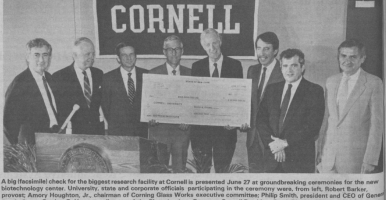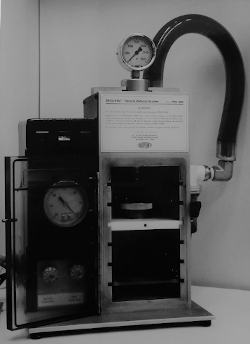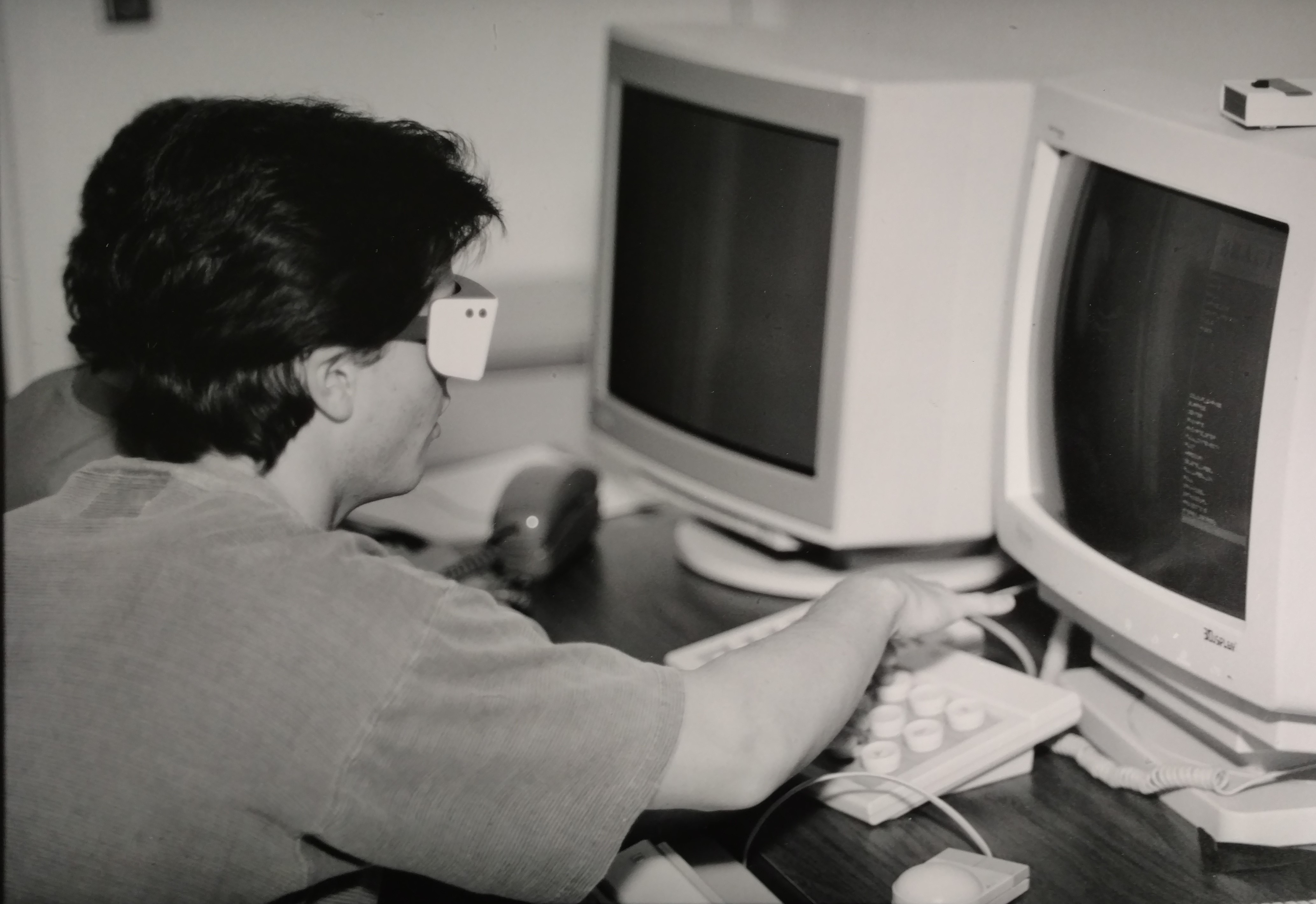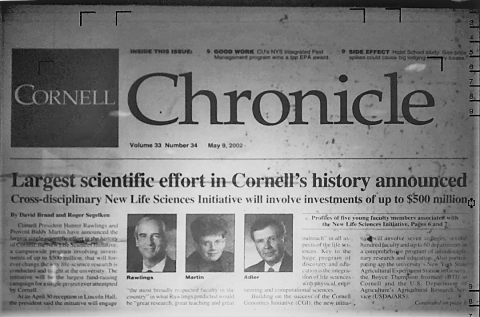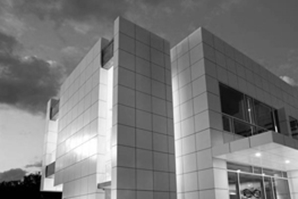Our history
1983 The Center for Advanced Technology (CAT) program is created by New York State (NYS). Cornell is chosen to host the “Biotechnology Center.”
1984 The Biotechnology Program is established “to promote the new discipline of modern biotechnology” under the initiative of Robert Barker, Provost of Cornell University. Gordon Hammes is named first director. The program runs operations in four areas: Technical service facilities; Research and Development; Technology transfer & business assistance; Education & training.
1986 NYS contributes $32.5M to the construction of the Biotechnology Building.
1987 The Biotechnology Program enables new technologies such as the gene gun, a method still used in plant transformation.
1988 Richard McCarty is named 2nd director.
1989 The Biotechnology building is dedicated. Services previously scattered across campus are centralized in one location: this is the birth of one of the first true biotechnology service centers with multiple core facilities.
1990 Facilities expand with new services: Computer Lab; Fermentation; Sequencing; Peptide Synthesis; Mass Spectrometry; Flow Cytometry; Plant Tissue Culture & Transformation; Imaging; Microscopy.
1990 Milton Zaitlin is named 3rd director.
1991 Lynn W. Jelinski is named 4th director.
1994 First CAT re-designation.
1996 Increased synergy between facilities. Creation of the Biotechnology Resource Center (BRC) within the Biotechnology Program to group all technical service facilities into a coordinated program.
1998 Richard D. Holsten is named 5th director.
2000 Stephen Kresovich is named 6th director. The Biotechnology Program is renamed “Institute for Biotechnology and Life Science Technologies.” New focus on cross-campus cooperation and interdisciplinary research between biological and physical sciences.
2002 “Biotech” becomes part of the New Life Science Initiative (NLSI), a transformative, $500M investment to promote life science research and education.
2002 “Biotech” becomes part of the New Life Science Initiative (NLSI), a transformative, $500M investment to promote life science research and education.
2004 Re-designation of the Cornell CAT, named “Center for Life Science Enterprise.” Plans outlined for the creation of the the Business Greenhouse, a life science incubator on campus. NLSI sparks the emergence of the facilities in their current form, servicing four major areas: DNA Sequencing, Proteomics, Microscopy, and Computing.
2005 Kelvin Lee is named 7th director.
2007 Stephen Kresovich is named 8th director.
2010 Jocelyn Rose is named 9th director. The Institute for Biotechnology and Life Science Technologies takes the name: the “Institute of Biotechnology.”
2014 Third CAT re-designation.
2019 Matthew DeLisa is named 10th director. Reorganization mirroring changes in the life science landscape. The BRC hosts five core facilities: Bioinformatics, Proteomics & Metabolomics, Genomics, Imaging, and Flow Cytometry. The institute name officially becomes "Cornell Institute of Biotechnology."
2020 The Epigenomics facility is established
2022 The Transcriptional Regulation and Expression Facility (TREx) joins the Cornell Institute of Biotechnology and the Biomolecular Analysis core facility is launched.
2025 Marcus Smolka named Interim Director of the Institute of Biotechnology and Biotechnology Resource Center

